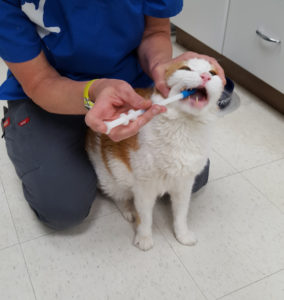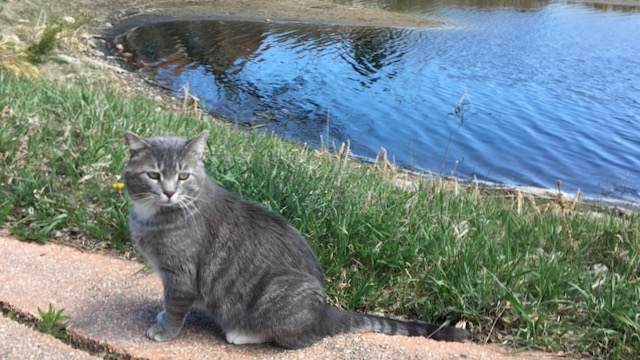
Bringing a Wild Cat Indoors – A cat tale
This is a story about bringing a wild cat indoors. This is the story of Gus, a cat who was wild in a previous life.
Gus’s story starts in a neighborhood in Colorado Springs, CO. He is a young, intact male who wanders around hunting, fighting with other cats, and seeking mates. He is what we call a “community” cat – an outdoor, free-roaming cat who does not have a guardian. He hunts mice and rabbits but also will eat food that some of the neighbors leave out for community cats.
Gus’s Timeline
- Early March 2019: Gus is trapped with a live trap
- March 5, 2019: Gus is neutered. He has a weak positive for Feline Immunodeficiency Virus and needs to have an indoor home.
- March 25, 2019: Gus starts taking fluoxetine, for anxiety and aggression due to anxiety.
- Clicker and leash training begin in early June, 2019.
- Gus is adopted on August 2, 2019. Owner continues clicker training and outdoor walks.
- Gus is weaned off fluoxetine by late November, 2019.
Gus’s Caretaker at the vet clinic says…
“At first he was absolutely untouchable. I couldn’t enter his room without using a flattened cardboard carrier as a shield to protect my legs from his vicious attacks. As I moved through the doorway, Gus would try his hardest to escape by lunging, striking, and biting at me. Once I was inside, he would rapidly alternate between seeking affection and getting over stimulated. He would often rub up against my leg, become overwhelmed at the sensation, and then hiss, yowl or bite me in response.”
Medication and Behavior Modification
At first, fluoxetine just makes Gus sleepy and dopey.
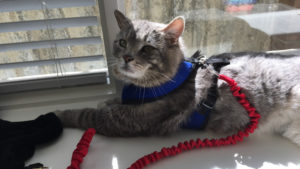
In a few weeks, he is allowed to roam freely around the veterinary clinic. He is exposed to people coming in and out of the vet clinic.
Gus takes well to clicker training. He begins to enjoy lunchtime walks several times a week.

Gus Today…
Gus is a member of a 4 cat household. He has been weaned off fluoxetine – his final dose was in late October, 2019. He is a little grumpier now that he is off fluoxetine. However, he is not aggressive toward his owners and visitors to the house. He goes for once to twice daily walks on a harness with or without a leash.
Gus is different from his three house raised feline roommates – he does not sleep on the bed; he does not greet his owners with a face rub; he does not sit with his owners but prefers to nap in a back room.
Bringing a wild cat indoors is not always successful. What went right for Gus?
- Gus tolerated the behavior drug well. It reduced his fear and anxiety and made accepting his new surroundings easier. He got used to a variety of people at the vet clinic.
- Clicker training gave him a way of knowing what people would do. Leash training helped him grow accustomed to indoor life with some exposure to the outdoors he grew up in.
- Finally, Gus was a still a young cat when trapped. This gave him flexibility (social learning in cats continues up to 3-4 years of age). He also has a practical and unflappable nature which helps him with new experiences.

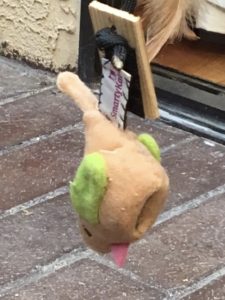
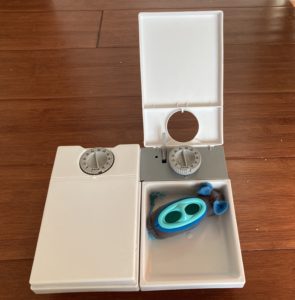
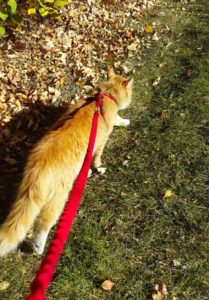
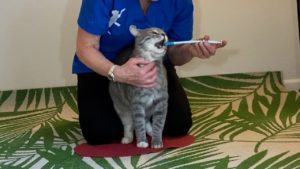
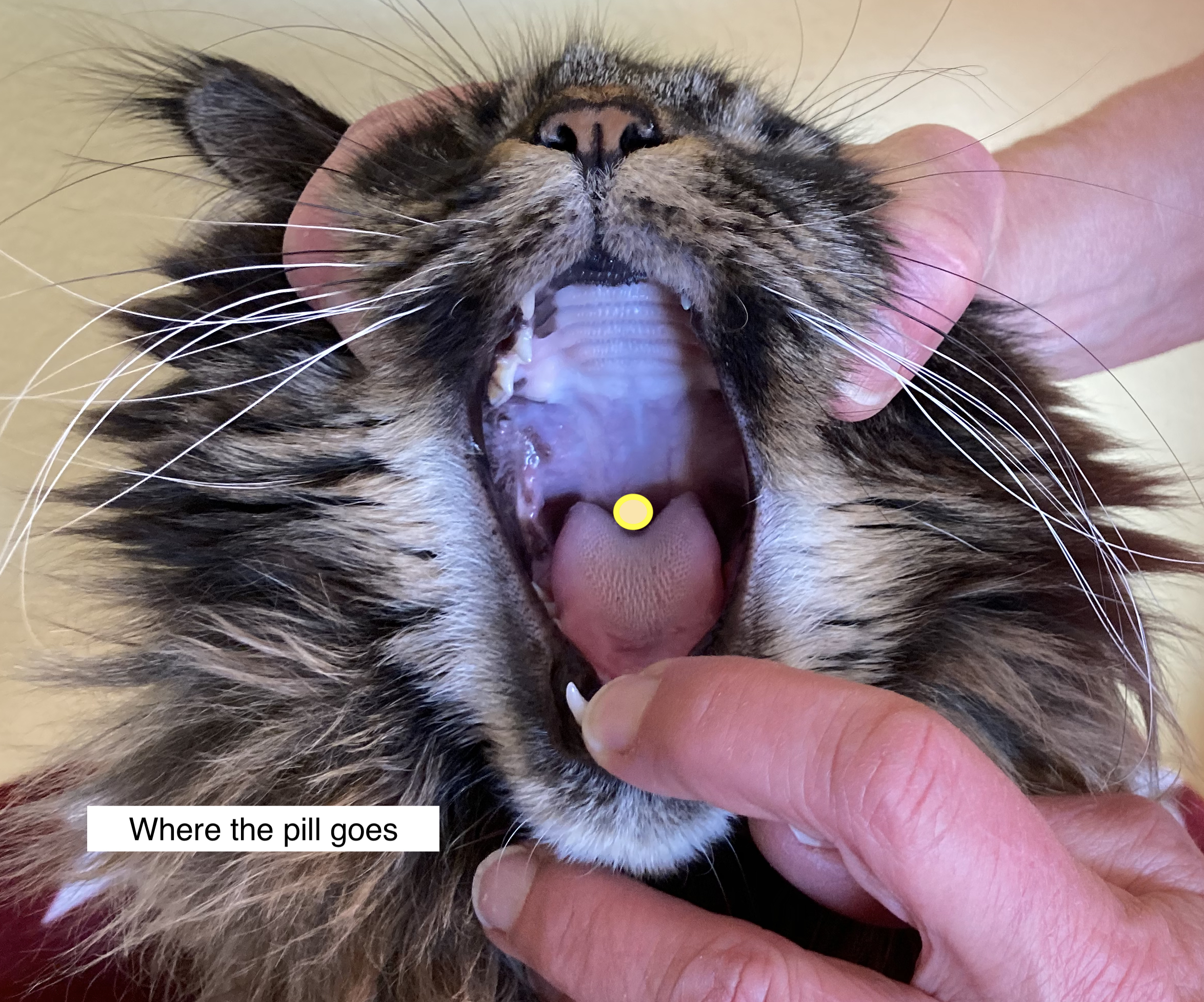
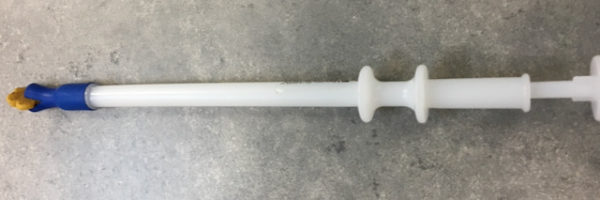
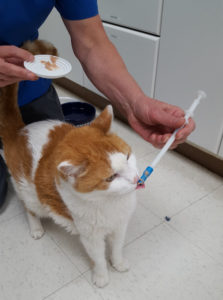
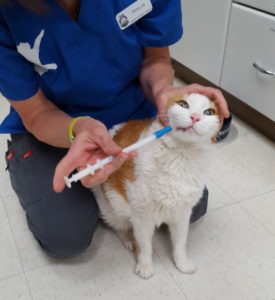 Guide the Piller into the side of Kitty’s mouth
Guide the Piller into the side of Kitty’s mouth